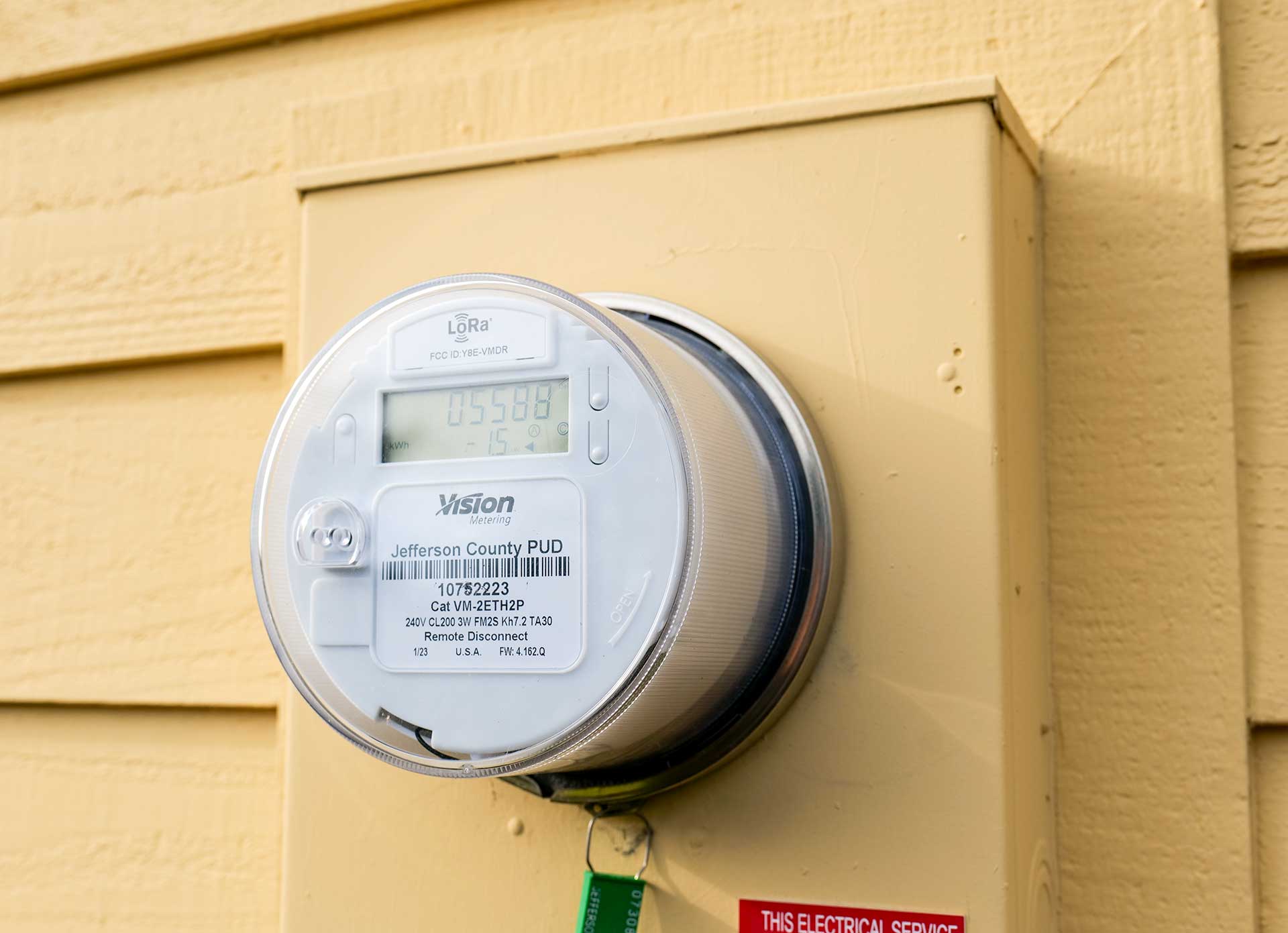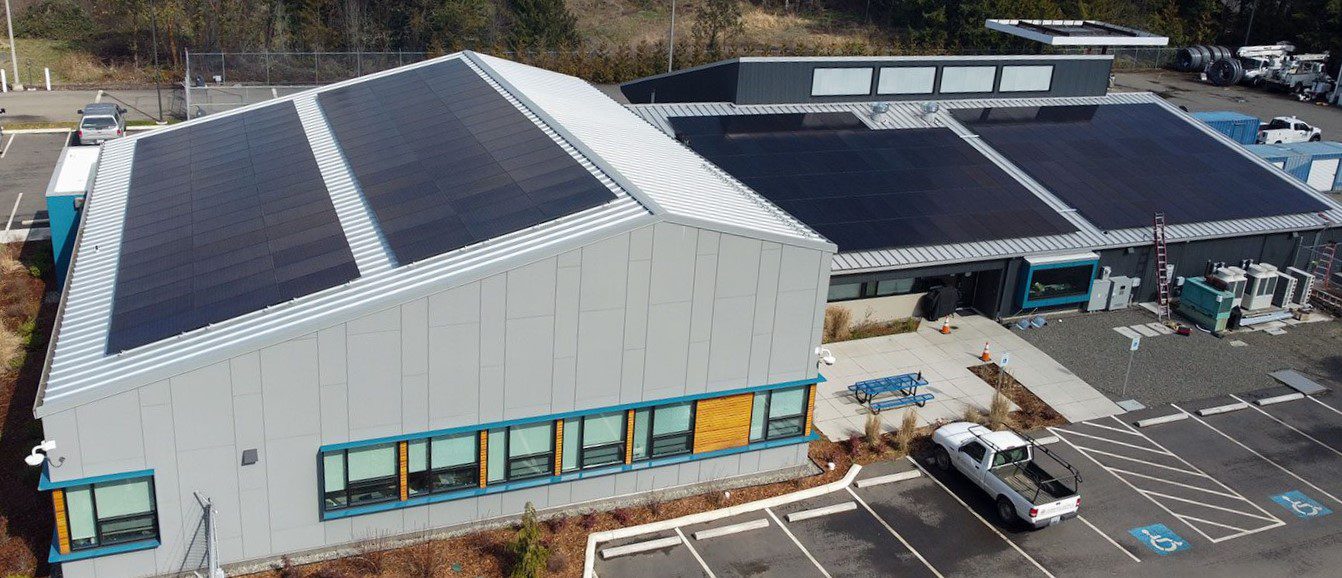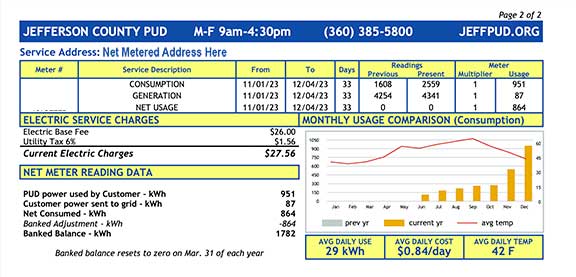Annual Banked Net Meter Reset: Early-April

Unused credits for residential, commercial, and community net metered systems carry over each month until March 31st of each year. JPUD’s official banked credit reset aligns with our April 5th billing date. Any banked credits that remain are granted to the PUD (per RCW 80.60). The PUD calculates the remaining banked credits (provided in kWh) and converts the total to an equivalent dollar amount. This total is then distributed to partner assistance agencies like OlyCap and St. Vincent de Paul.

How does net metering work?
Net meters are bi-directional meters allowing customers to both use power from the grid and send power back to the grid. Net meters measure how much power comes in and how much goes out. In years past, net metering required two meters: a primary meter and a production meter. Many homes with older systems have multiple meters, however new advanced meters (AMI) are capable of single-meter net metering.
When the PUD reads the meter, the customer is charged the difference between the two readings. AMI meters transmit power usage/generation reads every 15 minutes. If the customer generates more than they use they will receive a credit. Credits are “banked” and applied to future bills.
Customers with a solar system may see a large bank accumulate during the warm, sunny summer months. The “banked balance” is provided on the back of billing for any service with a registered PV system (see example below). All power sent to the grid (Generation) is provided in the Service Description, with the adjustment between generation and power used by the customer (from The PUD) provided at the bottom in the “Net Meter Reading Data”.
A monthly base rate does apply to all PUD customers to help cover a share PUD infrastructure operation and maintenance costs.
There are currently 624 net meters in Jefferson County–this includes residential, commercial, community, and wind systems. Even JPUD’s headquarters features a net metered solar system (see image).
For more information about net metering, please visit our website here.
